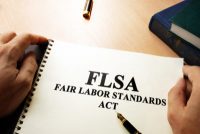Category: Benefits and Compensation
This topic provides guidance on how to handle compensation issues in a way that attracts and retains the best talent and advances the strategic goals of your business. You get news and tips on what’s going on nationally and in the states, and updates on changes in regulations, possible governmental action, and emerging compensation trends.
Flexible spending accounts (FSAs) and health savings accounts (HSAs) are important tools for the more than 70 million people who currently use these accounts to pay for out-of-pocket healthcare expenses or save for healthcare needs in retirement, all while reducing taxable income.
For most of 2020, employers and employees alike have been focused on health, health care, and healthcare coverage. And while these topics will still be very much top of mind this enrollment season, employers have a unique opportunity to shift the focus to their employees themselves.
The Fair Labor Standards Act (FLSA) mandates the federal minimum wage level and requirement to pay employees overtime for hours in excess of 40 per workweek. While there are many more components to the FLSA, these are two that tend to get a lot of attention.
For many employers, the telework experiment necessitated by COVID-19 has been a surprising success. Many are considering whether to continue the work-from-home option for at least a portion of the workforce. One lingering concern, however, is how best to track time for nonexempt workers who are away from the physical workplace.
Once again this year, employers and insurers were given an extra month to comply with the upcoming Affordable Care Act (ACA) requirements to furnish 1095-B and -C reports to individuals.
Anyone who has dealt with payroll can probably attest to how easy it is to end up with similar employees who are paid different amounts. It can happen for lots of reasons.
The U.S. Department of Labor’s (DOL) Wage and Hour Division (WHD) recently published guidance addressing employer obligations to track employee hours while teleworking. Even though the guidance is being issued in part because of the increase in teleworking arrangements during the COVID-19 crisis, the agency emphasized it applies to all telework or remote work arrangements, not just […]
Earlier this summer, President Donald Trump issued an Executive Order directing Secretary of the Treasury Steven Mnuchin to defer the withholding, deposit, and payment of certain payroll taxes beginning September 1 through the end of 2020. The order left several important questions open and directed the Treasury to issue guidance to implement the order.
Holistic well-being and saving on healthcare costs are top of mind for employers and employees alike. Emily Taylor of Naturally Slim shares why behavioral change weight management solutions are the answer.
Typically, employees think about their benefits two times: when they are first hired and the day before benefits elections are due. This year, however, things are very different. According to recent research from Voya Financial, 71% of employees plan to spend more time reviewing their voluntary benefits this year compared with last. The reason for […]













